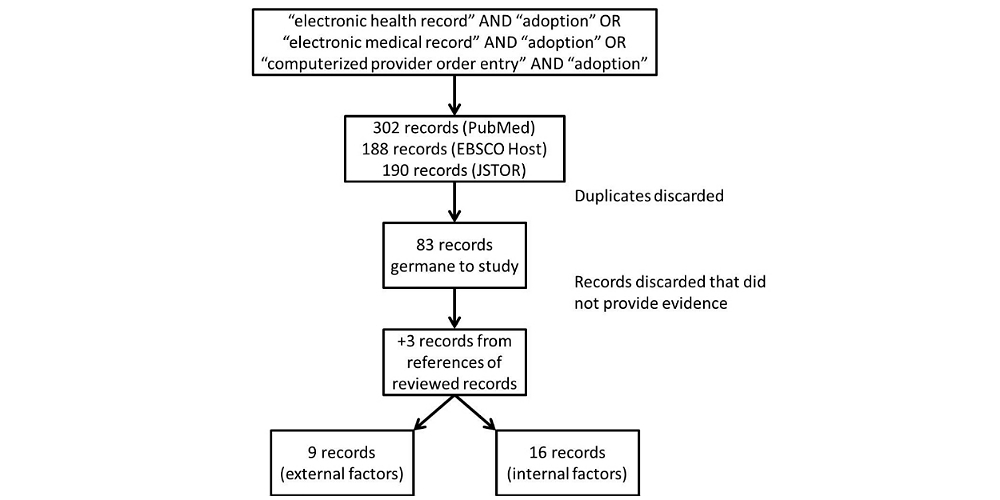Difference between revisions of "Template:Article of the week"
Shawndouglas (talk | contribs) (Updated article of the week text.) |
Shawndouglas (talk | contribs) (Updated article of the week text.) |
||
| Line 1: | Line 1: | ||
<div style="float: left; margin: 0.5em 0.9em 0.4em 0em;">[[File: | <div style="float: left; margin: 0.5em 0.9em 0.4em 0em;">[[File:Fig1 Kruse JMIRMedInfo2014 2-1.jpg|220px]]</div> | ||
'''"[[Journal: | '''"[[Journal:Factors associated with adoption of health information technology: A conceptual model based on a systematic review|Factors associated with adoption of health information technology: A conceptual model based on a systematic review]]"''' | ||
The purpose of this systematic review is to identify a full-spectrum of both internal organizational and external environmental factors associated with the adoption of [[health information technology]] (HIT), specifically the EHR. The result is a conceptual model that is commensurate with the complexity of with the health care sector. We performed a systematic literature search in PubMed (restricted to English), EBSCO Host, and Google Scholar for both empirical studies and theory-based writing from 1993-2013 that demonstrated association between influential factors and three modes of HIT: EHR, [[electronic medical record]] (EMR), and computerized provider order entry (CPOE). We also looked at published books on organizational theories. We made notes and noted trends on adoption factors. These factors were grouped as adoption factors associated with various versions of EHR adoption. The resulting conceptual model summarizes the diversity of independent variables (IVs) and dependent variables (DVs) used in articles, editorials, books, as well as quantitative and qualitative studies (n=83). ('''[[Journal:Factors associated with adoption of health information technology: A conceptual model based on a systematic review|Full article...]]''')<br /> | |||
<br /> | <br /> | ||
''Recently featured'': [[Journal:Human–information interaction with complex information for decision-making|Human–information interaction with complex information for decision-making]], [[Journal:Making big data useful for health care: A summary of the inaugural MIT Critical Data Conference|Making big data useful for health care: A summary of the inaugural MIT Critical Data Conference | ''Recently featured'': [[Journal:Generalized procedure for screening free software and open-source software applications|Generalized procedure for screening free software and open-source software applications]], [[Journal:Human–information interaction with complex information for decision-making|Human–information interaction with complex information for decision-making]], [[Journal:Making big data useful for health care: A summary of the inaugural MIT Critical Data Conference|Making big data useful for health care: A summary of the inaugural MIT Critical Data Conference]] | ||
Revision as of 17:20, 16 November 2015
The purpose of this systematic review is to identify a full-spectrum of both internal organizational and external environmental factors associated with the adoption of health information technology (HIT), specifically the EHR. The result is a conceptual model that is commensurate with the complexity of with the health care sector. We performed a systematic literature search in PubMed (restricted to English), EBSCO Host, and Google Scholar for both empirical studies and theory-based writing from 1993-2013 that demonstrated association between influential factors and three modes of HIT: EHR, electronic medical record (EMR), and computerized provider order entry (CPOE). We also looked at published books on organizational theories. We made notes and noted trends on adoption factors. These factors were grouped as adoption factors associated with various versions of EHR adoption. The resulting conceptual model summarizes the diversity of independent variables (IVs) and dependent variables (DVs) used in articles, editorials, books, as well as quantitative and qualitative studies (n=83). (Full article...)
Recently featured: Generalized procedure for screening free software and open-source software applications, Human–information interaction with complex information for decision-making, Making big data useful for health care: A summary of the inaugural MIT Critical Data Conference










